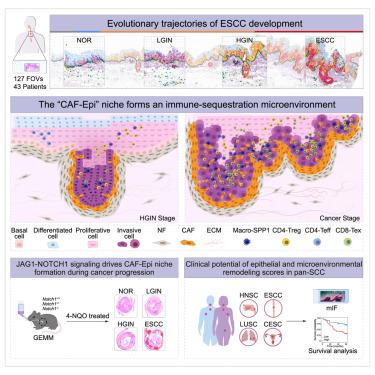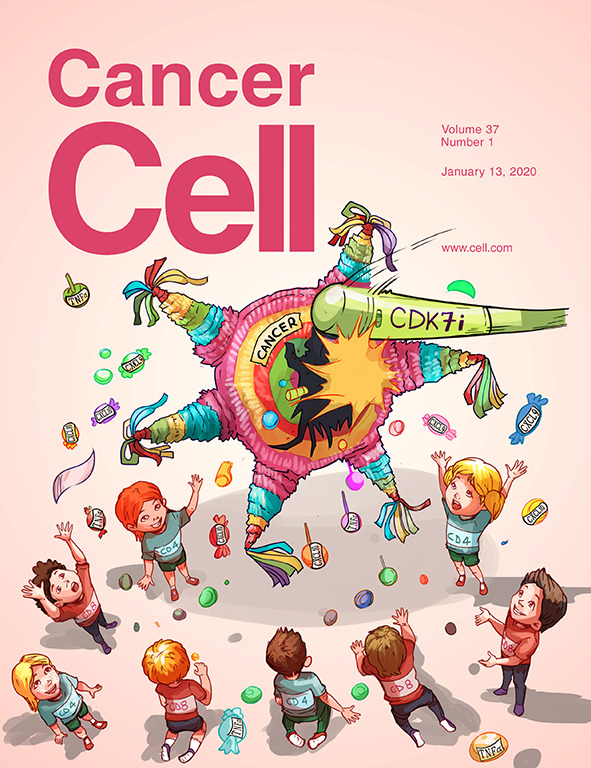Single-cell multi-stage spatial evolutional map of esophageal carcinogenesis
IF 48.8
1区 医学
Q1 CELL BIOLOGY
引用次数: 0
Abstract
Cancer development involves the co-evolution of cancer cells and their surrounding microenvironment, yet the dynamics of this interaction within the physical architecture remains poorly understood. Here, we present a spatial transcriptomic map at single-cell resolution, encompassing 127 multi-stage fields of view from 43 patients, to chart the evolutionary trajectories of human esophageal squamous cell carcinoma (ESCC). By analyzing 6.4 million cells, we reveal that ESCC progression is driven by a proliferative epithelial cell subpopulation that acquires dedifferentiated and invasive characteristics. At the late precancerous stage, these cells disrupt the epithelial-stromal interface and recruit normal fibroblasts via JAG1-NOTCH1 signaling, transforming them into cancer-associated fibroblasts (CAFs). This interaction leads to the formation of a “CAF-Epi” (CAF and epithelial cell) niche at the tumor edge that shields the tumor from immune surveillance. The CAF-Epi niche formation is a key indicator of progression in ESCC and other squamous cell carcinomas and patient outcomes.

求助全文
约1分钟内获得全文
求助全文
来源期刊

Cancer Cell
医学-肿瘤学
CiteScore
55.20
自引率
1.20%
发文量
179
审稿时长
4-8 weeks
期刊介绍:
Cancer Cell is a journal that focuses on promoting major advances in cancer research and oncology. The primary criteria for considering manuscripts are as follows:
Major advances: Manuscripts should provide significant advancements in answering important questions related to naturally occurring cancers.
Translational research: The journal welcomes translational research, which involves the application of basic scientific findings to human health and clinical practice.
Clinical investigations: Cancer Cell is interested in publishing clinical investigations that contribute to establishing new paradigms in the treatment, diagnosis, or prevention of cancers.
Insights into cancer biology: The journal values clinical investigations that provide important insights into cancer biology beyond what has been revealed by preclinical studies.
Mechanism-based proof-of-principle studies: Cancer Cell encourages the publication of mechanism-based proof-of-principle clinical studies, which demonstrate the feasibility of a specific therapeutic approach or diagnostic test.
 求助内容:
求助内容: 应助结果提醒方式:
应助结果提醒方式:


